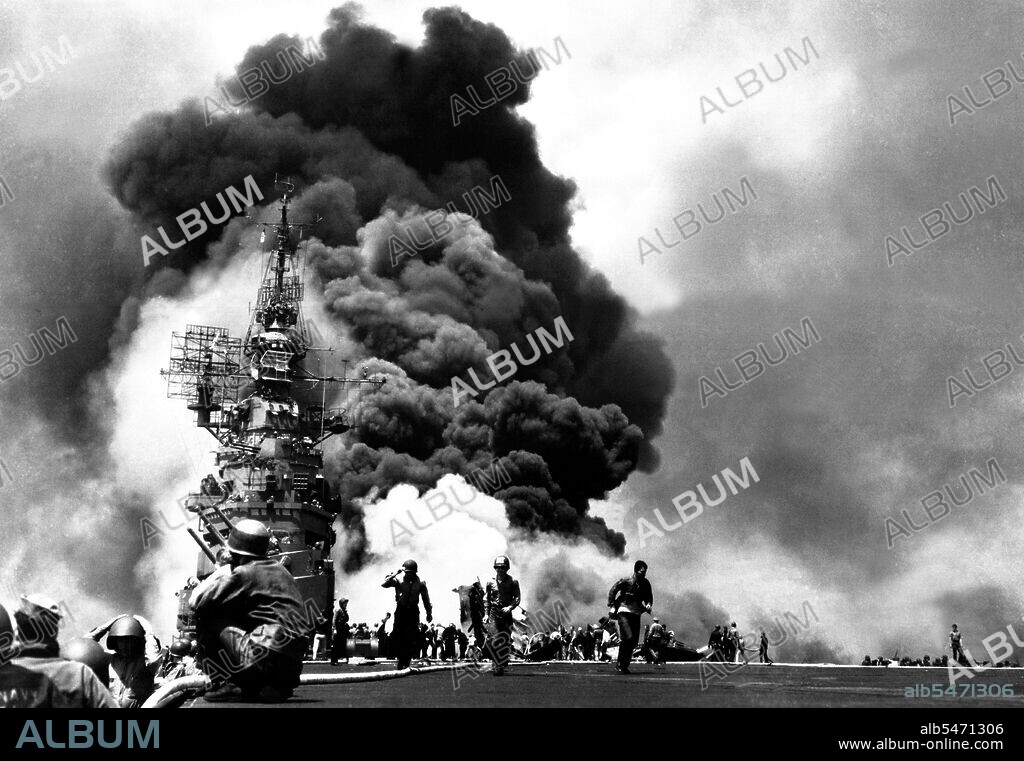alb5471306
USA-Japan: The USS Bunker Hill hit by two Japanese kamikaze aircraft off Kyushu,11 May,1945

|
Añadir a otro lightbox |
|
Añadir a otro lightbox |



¿Ya tienes cuenta? Iniciar sesión
¿No tienes cuenta? Regístrate
Compra esta imagen

Título:
USA-Japan: The USS Bunker Hill hit by two Japanese kamikaze aircraft off Kyushu,11 May,1945
Descripción:
Ver traducción automática
Kamikaze ('divine wind') were suicide attacks by military aviators from the Empire of Japan against Allied naval vessels in the closing stages of the Pacific campaign of World War II, designed to destroy as many warships as possible. Kamikaze pilots would attempt to crash their aircraft into enemy ships in planes laden with explosives, bombs, torpedoes and full fuel tanks. The aircraft's normal functions (to deliver torpedoes or bombs or shoot down other aircraft) were put aside, and the planes were converted to what were essentially manned missiles in an attempt to reap the benefits of greatly increased accuracy and payload over that of normal bombs. The goal of crippling as many Allied ships as possible, particularly aircraft carriers, was considered critical enough to warrant the combined sacrifice of pilots and aircraft. These attacks, which began in October 1944, followed several critical military defeats for the Japanese. They had long lost aerial dominance due to outdated aircraft and the loss of experienced pilots. On a macroeconomic scale, Japan experienced a decreasing capacity to wage war, and a rapidly declining industrial capacity relative to the United States. The Japanese government expressed its reluctance to surrender. In combination, these factors led to the use of kamikaze tactics as Allied forces advanced towards the Japanese home islands.
Crédito:
Album / Pictures From History/Universal Images Group
Autorizaciones:
Modelo: No - Propiedad: No
¿Preguntas relacionadas con los derechos?
¿Preguntas relacionadas con los derechos?
Tamaño imagen:
5035 x 3482 px | 50.2 MB
Tamaño impresión:
42.6 x 29.5 cm | 16.8 x 11.6 in (300 dpi)
Palabras clave:
AMERICA • ASIA • ASIATICO • CONFLICTO BELICO • EE. UU • EE. UU. • EEUU • ESTADOS UNIDOS DE AMERICA • ESTADOS UNIDOS USA EUA EEUU • ESTADOS UNIDOS • FASCISMO • GUERRA DEL PACIFICO • GUERRA • HISTORIA • HISTORICO • IMPERIALISMO • JAPON • JAPONES • KAMIKAZE • MILITAR • MILITARISMO • SEGUNDA GUERRA MUNDIAL • U. S. A. • USA • WAR
 Pinterest
Pinterest Twitter
Twitter Facebook
Facebook Copiar enlace
Copiar enlace Email
Email
